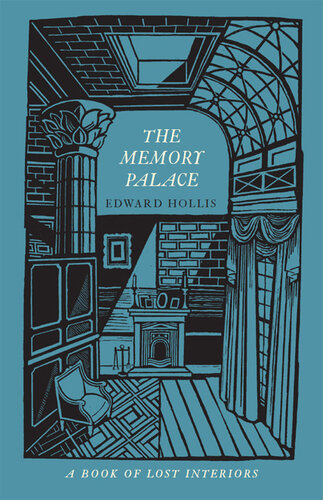
The Memory Palace
A Book of Lost Interiors
کتاب های مرتبط
- اطلاعات
- نقد و بررسی
- دیدگاه کاربران
نقد و بررسی

November 4, 2013
Architect Hollis (The Secret Lives of Buildings) dazzles and dizzies the reader in this cultural history of interiors and how the spaces we inhabit, decorate, and fill come to represent our sense of the world and the order we make of it. Here, rooms are not merely rooms, objects are not merely objects: they are the stories of our histories and hopes, embodying our traditions and values. “Interiors do not just remind us who we are, where we’re from, or how to behave. They remind us to remember,” Hollis writes. Along the way, there are stops in the palaces of ancient Rome, the curiosity room of Rudolf II, Marie Antoinette’s boudoir, Victorian England’s Crystal Palace, and the film sets of Gone with the Wind, as Hollis recreates these lost or transformed spaces. Hollis effectively uses his grandmother’s sitting room as a framing device; each chapter leads off with a vignette about her very full, orchestrated space. Like the interiors he’s celebrating, Hollis’s book is a meeting place of ideas, history, objects, and personal interpretation. His stories are told in an impressionistic style that can become precious and unfocused at times. This distinct approach, however, suits the subject, and when the threads come together, the results are deeply satisfying. Agent: Patrick Walsh, Conville & Walsh.

January 1, 2014
Hollis (Interior Design/Edinburgh Coll. of Art; The Secret Lives of Buildings, 2009) returns with a personal history of the ephemeral lives of interiors. The author employs an emotional image throughout: his grandmother's London home--"a little brick box" he calls "The Doll's House." He returns to this scene at the beginning of each of the major sections to show us the symbolic relevance of her tiny space, a space that holds many of her personal treasures and memories. Hollis begins with an obvious note: Interiors don't last very long. We change, move and die, and all is lost or scattered. The author takes us back to Palatine Hill in ancient Rome and describes the structures that once lay there (or nearby)--and what has happened to them. He takes a farther leap back to Romulus and his hut and notes, "there's always been a beginning before the beginning." In his section on furniture, he discusses the significance of thrones, the Round Table, the King's Bench and the design of the House of Commons. His section on objects includes the fabled Kunstkammer, the cabinet of curiosities. Then he examines decor, and where could that lead but Versailles? Hollis offers several sections on the palace but ends with the room in Paris where Marie Antoinette awaited her execution. His section on commodities includes the history of the 1851 Great Exhibition and its centerpiece, the Crystal Palace. Hollis ends with an appropriate focus--the 1939 film of Gone with the Wind--and tells us what happened to some of the costumes, properties and scenery, and he examines the evolution of the mass media, from the earliest TV sets to the iCloud (the latter, he writes, is itself "an enchanted memory palace"). Eloquent and evocative evidence of the evanescence of all.
COPYRIGHT(2014) Kirkus Reviews, ALL RIGHTS RESERVED.

February 1, 2014
This is the second book by Hollis (design research, Edinburgh Coll. of Art), an architect who made an impression with his debut, The Secret Lives of Buildings. This title tells a series of anecdotes. Each theme section begins with a traditional sitting room in a London suburb. The author likens interiors to the "memory palaces" used by ancient orators to recollect their speeches: each item in any furnished room refers to other times and places. Hollis ranges widely, mixing the famous and obscure in vanished but influential architecture, furniture, objects, decor, infrastructure, and images, for example, he discusses the mobility of medieval royal courts and the behavior of the crowds visiting the Crystal Palace in 1851. He concludes with the interiors of a reality television series, the virtual labyrinths of some computer games, and Google's rural warehouses containing millions of cloud servers. The book includes a few engravings and photographs, but the text bears most of Hollis's flights of imagination. VERDICT A brisk tour de force of research and writing that requires your full attention. Sophisticated readers with an interest in design will find this rewarding.--David R. Conn, formerly with Surrey Libs., BC
Copyright 2014 Library Journal, LLC Used with permission.




















![Design Like You Give a Damn [2]](https://dl.bookem.ir/thumbnails/150/ISBN13/9781613122860.jpg)




دیدگاه کاربران